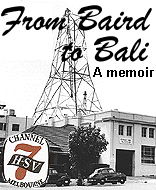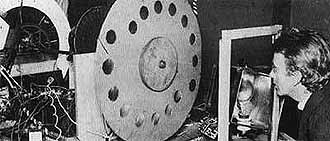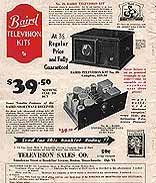|
OLD
CODGERS
|
| The first 10 years of John's working
life, from 1960 - 1970, was spent at television station HSV7, Melbourne,
These were great times as Tv, had only started in 1956. In 2002, |
| retired HSV7 old timer Donald Smith
organized a reunion of "Old Codgers" It was a big success. Annual |
 |
| reunions have followed, each time
attendance's increasing. Now a number of members have put together a CD
of photo's of the reunions, plus a collection of historical photos of the
early days. |
| Recently, ex-channel 7 staff member
Harold Aspinal sent a copy of the CD to the KHO. I was so inspired by |
 |
| these old photos, I decided to write
a memoir of the period from my perspective. Photos were augmented by others
from the internet. We acknowledge these suppliers of photographs. Harold
Aspinall, Russell Bourne, Richard Bence, Dick McEwan, Dick Jones, Graham
Foster, Don Smith, David Perry, John Walters & Wilma Gray, wife of
the late Ted Gray. |
|
|
|
|

|
|
Episode 1
|
|
John
Logie Baird
|
| John Logie Baird was born on August
13th, 1888, in Helensburgh, Dunbarton, Scotland and died on June 14th,
1946. The television pioneer created the first televised pictures
of objects in motion (1924) |
| the first televised human
face (1925) and a year later he televised the first moving object image
in London. The BBC |

|
|
J.L. Baird
|
|
| started broadcasting television on
the Baird 30-line system in 1929. |
|
|
|
|
|

|
|
Baird's first mechanical television
|
| In July 1930, the first British Play
was transmitted, "The Man with the Flower in his Mouth. " The world's first
regular transmissions using the electronic Marconi-EMI, 405 line system
started in England in 1936. |
 |
|
Early ad for Baird Tv kits
|
|
|
|
|
|
The
"Logies"
|
| The annual Australian Television
awards are called the "Logies" |
| in honor of John Logie Baird. The
name was suggested by the "King" and first star of Australian |
 |
| Television, Graham Kennedy. |
|
How
it worked
|
| The scanning wheel, consisted
of 2 identical scanning wheels drilled to create a scan of the object. |
 |
|
|